 Your new post is loading...
 Your new post is loading...

|
Scooped by
Gilbert C FAURE
December 15, 2013 11:27 AM
|
RHUMATOLOGIE - RHEUMATOLOGY
Obviously a topic of interest for so many people: for the patient, it includes aching muscles, tendons and joints.. for MDs and researchers, it covers degenerative diseases as well as arthritis, often associated with various autoimmune diseases (see autoimmunity http://www.scoop.it/t/autoimmunity). Fortunately, new diagnostic tools are available https://www.scoop.it/t/rheumatology-rhumatologie?q=diagnosis and new biotherapies https://www.scoop.it/t/rheumatology-rhumatologie?q=therapy allowed to improve the prognosis and the quality of life of patients Guess why some topics are much covered than others? Simply because, they were personal topics of research before, for instance Synovial membrane Crystal Deposition Diseases Rheumatoid arthritis with various methods Scanning Electron Microscopy Immunohistology

|
Scooped by
Gilbert C FAURE
August 24, 8:15 AM
|

|
Scooped by
Gilbert C FAURE
August 3, 6:44 AM
|

|
Scooped by
Gilbert C FAURE
June 11, 4:38 AM
|
Big thanks to Korng Ea for delivering a fantastic talk at the last ITN INTEC #ISSEC webinar before the summer break!
We also wish to express our gratitude to all the other speakers who contributed throughout the first semester 2025 series Makarand Risbud Christoph Winkler @Vicky Macrae @José-Luis Millan Anabela Bensimon Brito
Finally, thank you to all attendees for your active participation, which has been making this series a great success. See you in a few months with a new program built by Flóra Szeri, PhD

|
Rescooped by
Gilbert C FAURE
from AUTOIMMUNITY
May 30, 5:41 AM
|
The ACR has released its 2025 Systemic Lupus Erythematosus (SLE) treatment guidelines and consensus-based good practice statements, applicable to children and adults with SLE. Overall, the goals of SLE management are to achieve remission or a low level disease activity, reduce morbidity and mortality, and minimize treatment-related adverse events. For treatment of SLE, they recommend universal use of hydroxychloroquine, minimizing glucocorticoid exposure, and early introduction of conventional and/or biologic immunosuppressive therapies.

|
Scooped by
Gilbert C FAURE
May 14, 3:56 AM
|
💡Indeed the nosology of CPPD disease is out dated. The G-CAN is aiming at changing the nomenclature
👉🏼 Follow up the topic

|
Scooped by
Gilbert C FAURE
April 19, 10:14 AM
|

|
Scooped by
Gilbert C FAURE
March 21, 9:28 AM
|

|
Scooped by
Gilbert C FAURE
March 14, 4:56 AM
|

|
Scooped by
Gilbert C FAURE
February 10, 1:13 PM
|
Our immune system is armed with an array of defenses designed to detect and eliminate harmful threats. One of its most powerful defense mechanisms is the complement system—a group of proteins that patrols our body, ever vigilant for signs of infection or injury. Now, over 100 years after the complement system was first described, researchers at Mass General Brigham have discovered that a protein known as granzyme K (GZMK) drives tissue damage and inflammation by activating the complement system against our own tissues.

|
Scooped by
Gilbert C FAURE
February 9, 5:05 AM
|
This narrative review summarizes current evidence on the pathogenesis, epidemiology, clinical manifestations, diagnosis, and treatment of axial…

|
Scooped by
Gilbert C FAURE
January 14, 3:58 AM
|
The deposition of monosodium urate (MSU) crystals within joint spaces produces a painful inflammatory condition known as gout, a specific form of arthritis. The condition calls for a combined curative and preventive management model.

|
Scooped by
Gilbert C FAURE
December 22, 2024 5:24 AM
|
Carpal tunnel syndrome (CTS) is the most common nerve entrapment disorder worldwide. The epidemiology and risk factors, including family burden, for developing CTS are multi-factorial. Despite much research, its intricate pathophysiological mechanism(s) are not fully understood. An underlying subclinical neuropathy may indicate an increased susceptibility to developing CTS. Although surgery is often performed for CTS, clear international guidelines to indicate when to perform non-surgical or surgical treatment, based on stage and severity of CTS, remain to be elucidated. Neurophysiological examination, using electrophysiology or ultrasonography, performed in certain circumstances, should correlate with the history and findings in clinical examination of the person with CTS. History and clinical examination are particularly relevant globally owing to lack of other equipment. Various instruments are used to assess CTS and treatment outcomes as well as the effect of the disorder on quality of life. The surgical treatment options of CTS — open or endoscopic — offer an effective solution to mitigate functional impairments and pain. However, there are risks of post-operative persistent or recurrent symptoms, requiring meticulous diagnostic re-evaluation before any additional surgery. Health-care professionals should have increased awareness about CTS and all its implications. Future considerations of CTS include use of linked national registries to understand risk factors, explore possible screening methods, and evaluate diagnosis and treatment with a broader perspective beyond surgery, including psychological well-being. Carpal tunnel syndrome (CTS) is one of the most common hand conditions caused by an increased pressure on the median nerve in the carpal tunnel in the wrist. In this Primer, Dahlin et al. review the epidemiology, pathophysiology, diagnosis, management and quality of life of people with CTS; they also highlight occupational risk factors for this condition.
|

|
Scooped by
Gilbert C FAURE
October 9, 5:57 AM
|
📢 NEW REVIEW
Although psoriatic arthritis and rheumatoid arthritis are both common types of inflammatory arthritis characterised by synovial inflammation, there are distinct molecular and cellular landscapes between these conditions.
In this Review, Ryan Malcolm Hum and colleagues explore how research of the synovium has advanced the understanding of psoriatic arthritis, the potential of identified cell types and cytokines as biomarkers and novel therapeutic targets, how limited sample sizes in high-dimensional studies are hindering clinical translation, and the future directions for synovial research in psoriatic arthritis.
Maria Christofi, Lysette Marshall, NIHR Manchester Biomedical Research Centre (BRC)
Read the full Review here ➡️ https://lnkd.in/eFY6uAbF
Alt text: Previously identified cell types and cytokines implicated in psoriatic arthritis pathogenesis in the synovial fluid and synovial tissue

|
Scooped by
Gilbert C FAURE
August 7, 7:38 AM
|
Sjögren’s Disease: A Name Change with Real Impact
A powerful reminder for all of us in the Sjögren’s community and especially here at the NECESSITY project: language matters.
Through international consensus, published in Nature Reviews Rheumatology, officially retired the term “Sjögren’s syndrome” in favor of “Sjögren’s disease”and eliminates the distinction between “primary” and “secondary” forms. From now on, Sjögren’s is Sjögren’s whether or not it occurs with another autoimmune condition.
This shift is far from symbolic, it’s a meaningful change that reflects the seriousness of this condition and the lived experience of millions.
✅ Disease, not syndrome: Recognizes Sjögren’s as a complex, systemic autoimmune disease—not just a loose cluster of symptoms.
✅ Goodbye “primary” and “secondary”: These outdated terms are replaced by “associated” when applicable, offering more accurate and less stigmatizing language.
✅ Why it matters: Terminology shapes how a disease is perceived, diagnosed, and treated. This update supports better care, stronger research, and deeper validation for patients.
As the Sjögren’s Foundation underscores in the linked article, it’s time for all of us, be it clinicians, researchers, journals, media, and advocates to embrace this change and reflect it in our work and communication carefully.
This is a meaningful step forward for scientific clarity, clinical progress, and, above all, for patients. 💙
https://lnkd.in/ex8jcE5C
#SjögrensDisease #AutoimmuneAwareness #PatientAdvocacy #MedicalTerminology #NatureReviewsRheumatology #SjögrensCommunity

|
Scooped by
Gilbert C FAURE
June 13, 4:07 AM
|
Si vous rencontrez quelqu’un qui a les yeux secs, la bouche sèche, des douleurs, une fatigue chronique, c’est peut être parce que chacun de ces signes est fréquent. Mais c’est peut être dû à une maladie de Sjogren…..
Si voulez
- savoir ce qu’est cette maladie
- pourquoi on ne dit plus « Syndrome de sjogren » mais bien « Maladie de Sjogren »
- pourquoi on ne dit plus « Syndrome de Sjogren secondaire »
N’hésitez pas à télécharger cet article grâce au lien suivant:
https://rdcu.be/eqlz1
⸻
If you meet someone with dry eyes, a dry mouth, pain, or chronic fatigue, it might just be because each of these symptoms is common. But it could also be due to Sjögren’s disease…
If you want to:
• understand what this disease is,
• know why we no longer say “Sjögren’s syndrome” but rather “Sjögren’s disease”,
• learn why the term “secondary Sjögren’s syndrome” is no longer used,
feel free to download this article using the following link:
https://rdcu.be/eqlz1

|
Scooped by
Gilbert C FAURE
May 31, 9:15 AM
|

|
Scooped by
Gilbert C FAURE
May 20, 5:06 AM
|
The COVID-19 pandemic changed healthcare practices and social media played a significant role in those changes. While social media and online practice communities allow collaboration and engagement,

|
Scooped by
Gilbert C FAURE
May 7, 10:45 AM
|

|
Scooped by
Gilbert C FAURE
March 30, 9:59 AM
|
There is an ongoing search for novel biomarkers to enhance diagnosing and monitoring patients with rheumatic diseases (RDs). We conducted a systematic review and meta-analysis to investigate the potential role of the soluble cluster of differentiation 40 (sCD40) and sCD40 ligand (sCD40L), involved...

|
Scooped by
Gilbert C FAURE
March 19, 4:19 AM
|
Figure 2. Overview of the pathogenesis and treatment of OA. In osteoarthritis (OA), alarmins are endogenous molecules released in response to various forms of damage. These molecules bind to pattern recognition receptors (PRRs) on different cells, triggering either an inflammatory or regenerative...

|
Scooped by
Gilbert C FAURE
February 15, 6:56 AM
|
Systemic sclerosis (SSc) remains a challenging and enigmatic systemic autoimmune disease, owing to its complex pathogenesis, clinical and molecular heterogeneity, and the lack of effective disease-modifying treatments. Despite a century of research in SSc, the interconnections among microvascular dysfunction, autoimmune phenomena and tissue fibrosis in SSc remain unclear. The absence of validated biomarkers and reliable animal models complicates diagnosis and treatment, contributing to high morbidity and mortality. Advances in the past 5 years, such as single-cell RNA sequencing, next-generation sequencing, spatial biology, transcriptomics, genomics, proteomics, metabolomics, microbiome profiling and artificial intelligence, offer new avenues for identifying the early pathogenetic events that, once treated, could change the clinical history of SSc. Collaborative global efforts to integrate these approaches are crucial to developing a comprehensive, mechanistic understanding and enabling personalized therapies. Challenges include disease classification, clinical heterogeneity and the establishment of robust biomarkers for disease activity and progression. Innovative clinical trial designs and patient-centred approaches are essential for developing effective treatments. Emerging therapies, including cell-based and fibroblast-targeting treatments, show promise. Global cooperation, standardized protocols and interdisciplinary research are vital for advancing SSc research and improving patient outcomes. The integration of advanced research techniques holds the potential for important breakthroughs in the diagnosis, treatment and care of individuals with SSc. The diagnosis, treatment and management of systemic sclerosis (SSc) remains challenging, owing to the complexity of this disease. In this Perspective, an international group of experts discuss the future of SSc research and how the advent of innovative technologies will advance research into and understanding of SSc.

|
Scooped by
Gilbert C FAURE
February 10, 4:06 AM
|

|
Scooped by
Gilbert C FAURE
January 19, 6:57 AM
|

|
Scooped by
Gilbert C FAURE
January 5, 5:01 AM
|
New data for a very-very frequent Disease

|
Scooped by
Gilbert C FAURE
December 22, 2024 5:23 AM
|
|





 Your new post is loading...
Your new post is loading...
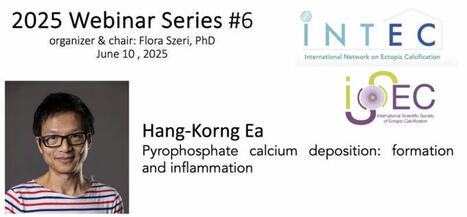

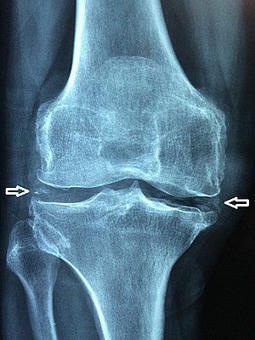

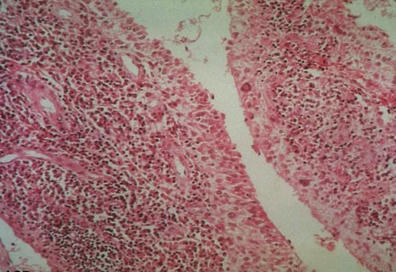
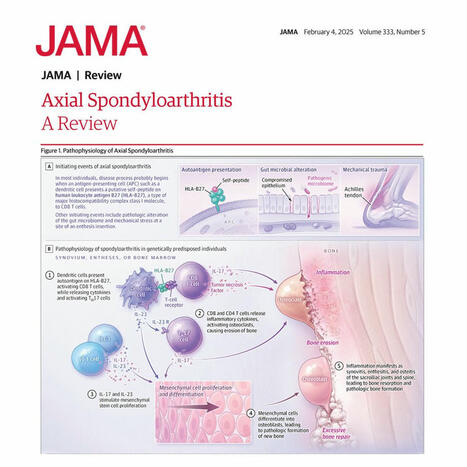


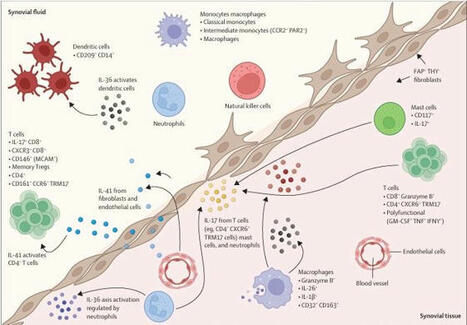


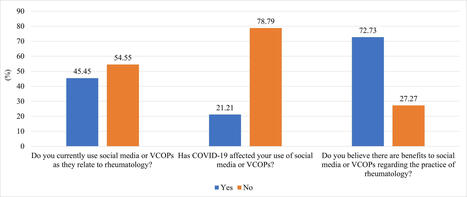
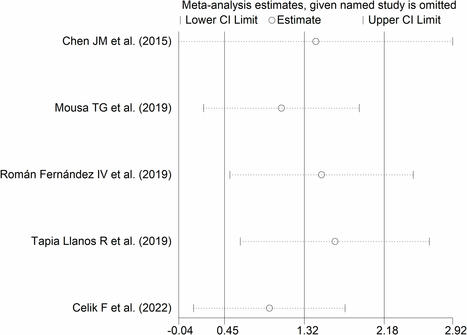








January 2016
still few viewers (#650) for this topic, but >1280 posts and 2000 views, much less than other immunology topics, but growing!
March 2024 > 2300 sccops, >10.1 K views, > 2600 visitors